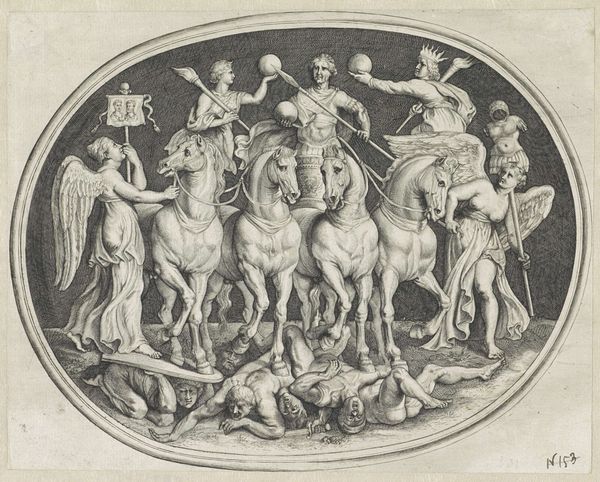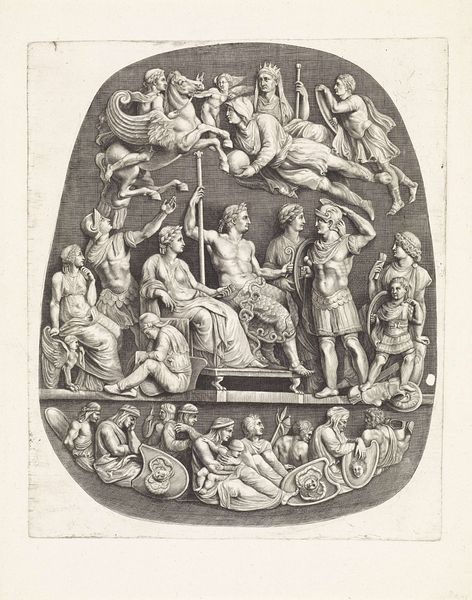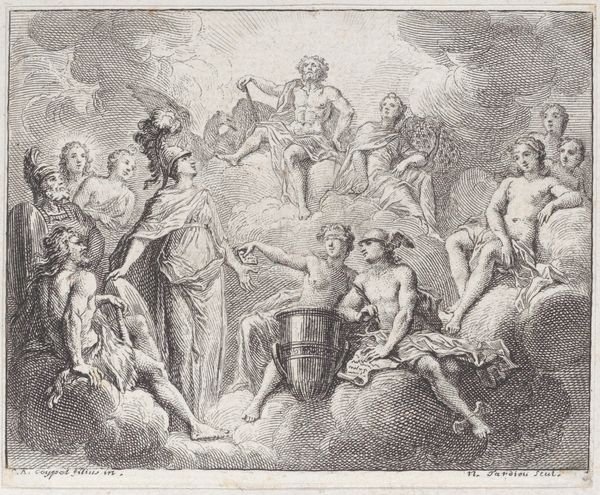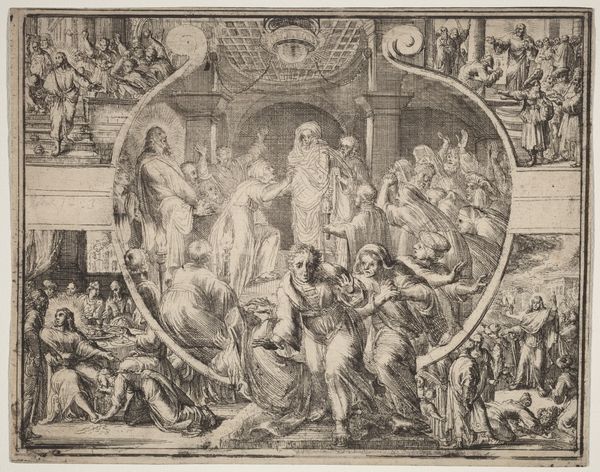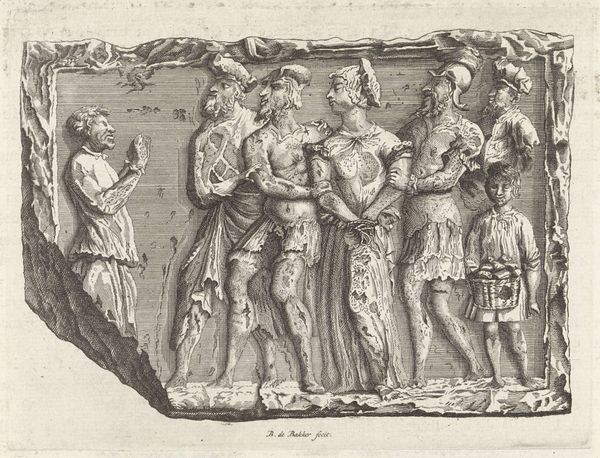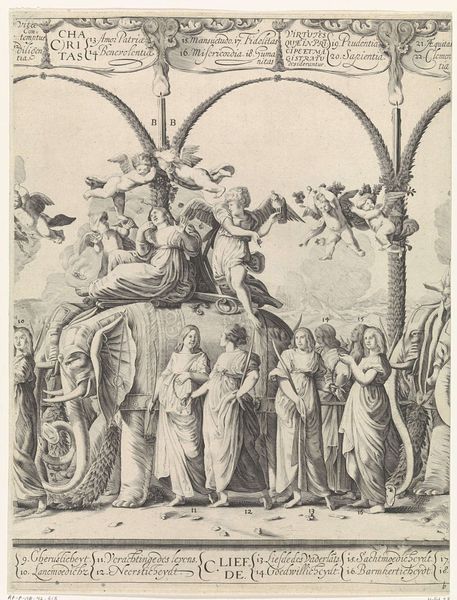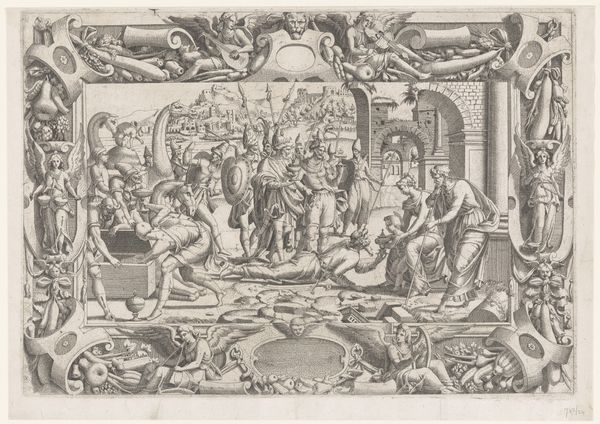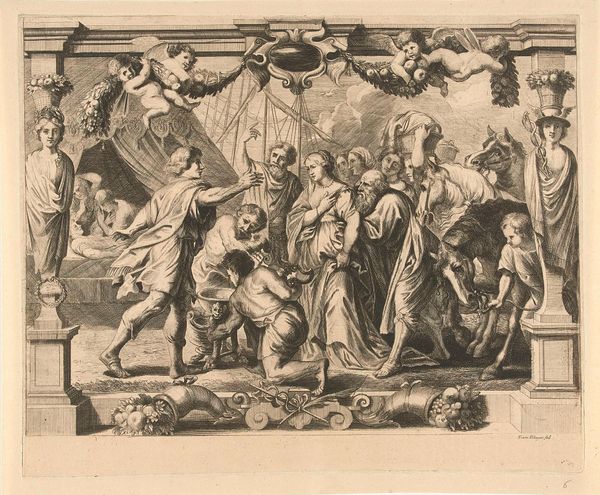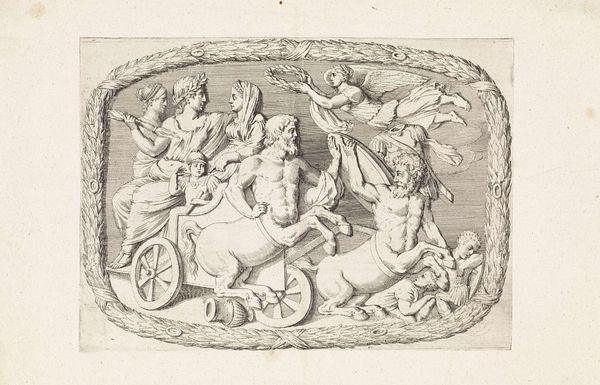
engraving
#
allegory
#
baroque
#
greek-and-roman-art
#
figuration
#
classicism
#
history-painting
#
engraving
Dimensions: height 143 mm, width 200 mm
Copyright: Rijks Museum: Open Domain
Curator: Looking at this engraving, based on the famous “Gemma Augustea” cameo, my immediate impression is how skillfully Ryckmans rendered its complex composition. Editor: Indeed! This piece offers us a fascinating look at the interplay of power and representation in the baroque period. This engraving from between 1616-1636 really unpacks the narratives embedded within that earlier Roman artwork, particularly how it reinforces imperial authority through figuration and allegory. Curator: Agreed. What interests me are the layers of artisanal production. It begins as a cameo, likely crafted by a highly skilled gem cutter. And later Nicolaes Ryckmans meticulously reproduces the piece using the method of engraving, extending its reach and influencing contemporary visual vocabularies and aesthetics of power. Editor: Precisely. And in transferring the cameo to print, it becomes democratized, available to a wider audience, impacting collective memory about Augustan Rome and the imperial cult that flourished in the era of the early empire. Let's note too the violence inherent in establishing and maintaining imperial rule that's downplayed, almost sanitized, in the upper register, even as the lower register captures a conquest scene in full violent action. How much of that narrative is communicated effectively is dependent on this image itself as well. Curator: Definitely. The engraving also highlights the skill and labor involved in both artistic forms, showing that Ryckmans sought to replicate, as much as was feasible, the relief carving and textural variations using nothing but line work. We should not overlook the time and effort needed to achieve this level of precision using the intaglio process. Editor: Exactly. It reflects not just an aesthetic style or individual technique, but also the dynamics of visibility, reception, and ideology embedded within both Roman and 17th-century culture. We must reflect that even reproductions carry implicit cultural messages, whether of control, or submission. Curator: That's a great point. Considering this image of antiquity being re-presented centuries later through entirely different materials is a striking instance of cross-media, trans-historical dialog and, of course, skillful manual reproduction and dissemination of symbolic and ideological motifs. Editor: Yes, thinking about the work, with all these nuances in mind really underscores how deeply history shapes both our understanding of ancient works and our modern sociopolitical landscape. It also proves art's power as an enduring carrier of ideas, power and even revolution across centuries and cultures.
Comments
No comments
Be the first to comment and join the conversation on the ultimate creative platform.
